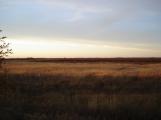1
Looking for Hay
10 October 2005
Foam Lake, SK Canada
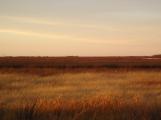
2
In 1891, Ingimundur Eiriksson Inge and Christjan J. Helgason left the Thingvalla Icelandic settlement near Churchbridge, SK to look for the water rumoured to be somewhere 'west of Yorkton'. Dry years had taken their toll, and the ranchers needed a source of hay. In the early summer of 1891 they reached Fishing Lake. Not far south was an area of several hundred acres of good tall grass, perfect for haying
3
Helgason, Helgi on the first trip to Foam Lake
10 December 2005
Foam Lake, SK Canada

4
[Helgason, Helgi]
But there was lots of water in that Lake, and I think in 84 [actually '91] when they came out - it's a very shallow Lake and it goes dry quite often - when they came out it was dry and the hay was probably six feet high in there. and that was over, what, a 1000 or two acres down in that Lake, somewhere, you know - a lot of land. So they thought, well, we're cattle people, that's what we want is hay, and this is where we're going. So they settled around the lake. The Helgason's never came all the way, they stopped in Whitesand until 1904, and he was a cattle buyer, he wasn't raising cattle.
5
Dominion Lands Office Survey Map Township 32 Range 11
29 January 1884
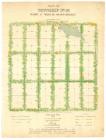
6
They returned to Thingvalla, and the next spring Inge Eiriksson returned to Fishing Lake, bringing his mother, Groa Asbjornadottir, sister Valgerdur and new brother-in-law Gisli Bildfell, and another sister, Gudrun, and her husband Bjarni Jasonson.
7
Site of First Icelandic Homestead
9 December 2005
Foam Lake, SK Canada

8
Groa filed in October of 1892 for the land they chose, SE32-32-11W2. In the corner of this quarter-section they built one house for all the families, and when another sister, Gudfina, and her husband Sveinn Halldorson came along with another family, Stefan and Gudrun Olafson, the stable was partitioned off for living quarters as well. Groa and her family lived in the house, a 14x18 log building with a sod roof, and Olafsons in the stable.
9
Site of the first Icelandic house in the area
25 September 2005
Foam Lake, SK Canada
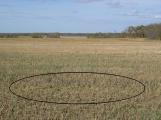
10
The location of the old house is now marked only by a slight hollow in a field. This view is looking north, toward Fishing Lake
11
Scythe
10 December 2005
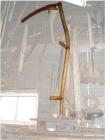
12
That first fall, a fire destroyed most of the hay they had cut, and so they went south to the dry Foam Lake to cut more. Their only hay mower broke down, the hay was getting too ripe and it was late in the season so Gisli Bildfell saddled up a horse and rode to Saltcoats, 140km (90miles) away and a full day's trip. He had to wait 2 days to get parts from Winnipeg, and when he got back, they were cutting hay by hand with scythes and raking it with home-made rakes.
13
The area was ranching country at that time, with a handful of other settlers raising cattle rather than farming. The Icelanders also ranched, raising cattle and sheep. In 1894 or -95, a prairie fire started south of Fishing Lake and traveled north and west for 4 miles, devastating hay supplies, barns, and even cattle unlucky enough to be caught in its path. The tiny community's hay supply for the winter as well as one of the stables was destroyed in the fire, but all the residents escaped.
14
Tall grass hay in Foam Lake Marsh
9 October 2005
Foam Lake, SK Canada
